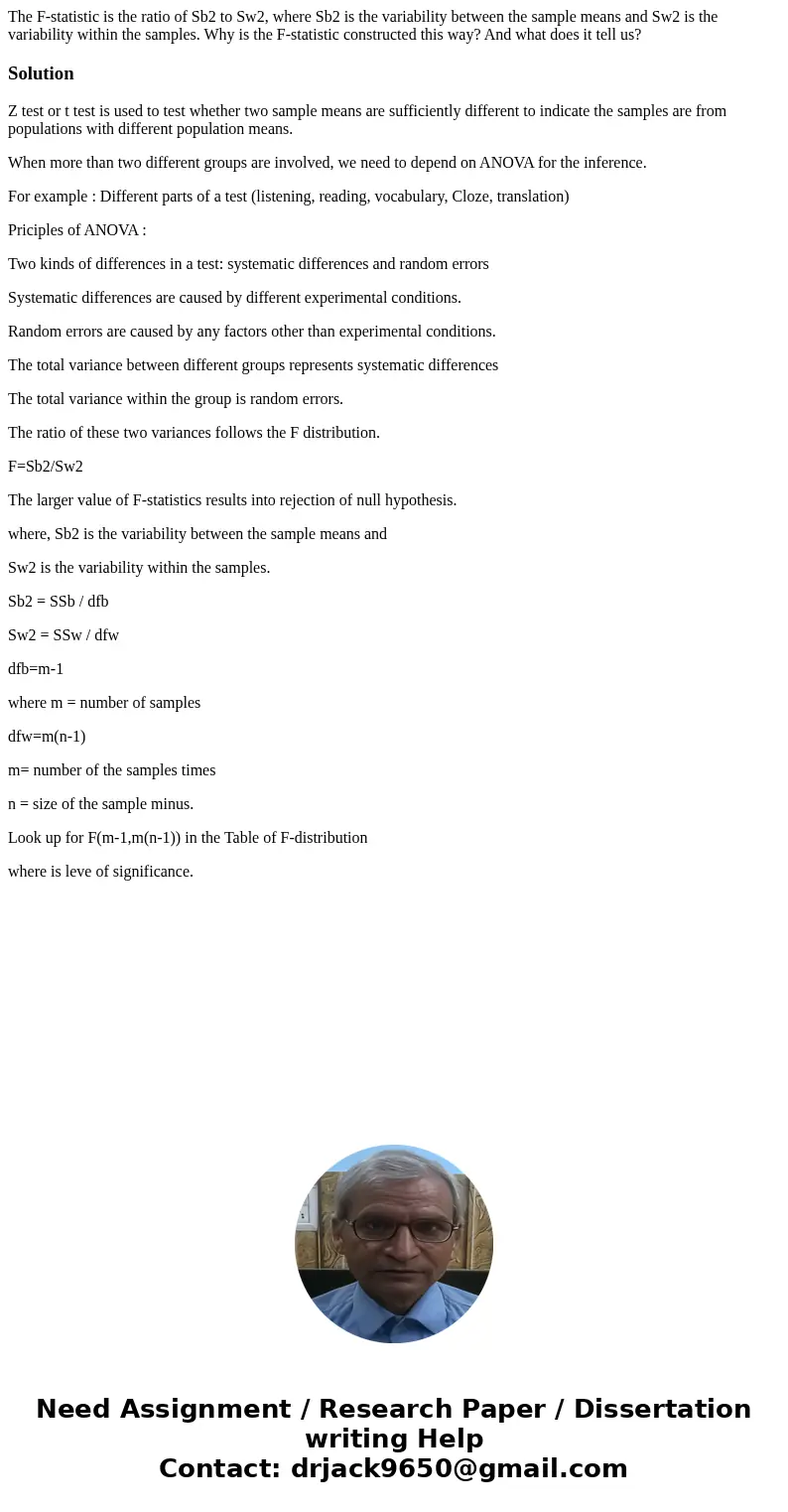The Fstatistic is the ratio of Sb2 to Sw2 where Sb2 is the v
The F-statistic is the ratio of Sb2 to Sw2, where Sb2 is the variability between the sample means and Sw2 is the variability within the samples. Why is the F-statistic constructed this way? And what does it tell us?
Solution
Z test or t test is used to test whether two sample means are sufficiently different to indicate the samples are from populations with different population means.
When more than two different groups are involved, we need to depend on ANOVA for the inference.
For example : Different parts of a test (listening, reading, vocabulary, Cloze, translation)
Priciples of ANOVA :
Two kinds of differences in a test: systematic differences and random errors
Systematic differences are caused by different experimental conditions.
Random errors are caused by any factors other than experimental conditions.
The total variance between different groups represents systematic differences
The total variance within the group is random errors.
The ratio of these two variances follows the F distribution.
F=Sb2/Sw2
The larger value of F-statistics results into rejection of null hypothesis.
where, Sb2 is the variability between the sample means and
Sw2 is the variability within the samples.
Sb2 = SSb / dfb
Sw2 = SSw / dfw
dfb=m-1
where m = number of samples
dfw=m(n-1)
m= number of the samples times
n = size of the sample minus.
Look up for F(m-1,m(n-1)) in the Table of F-distribution
where is leve of significance.

 Homework Sourse
Homework Sourse